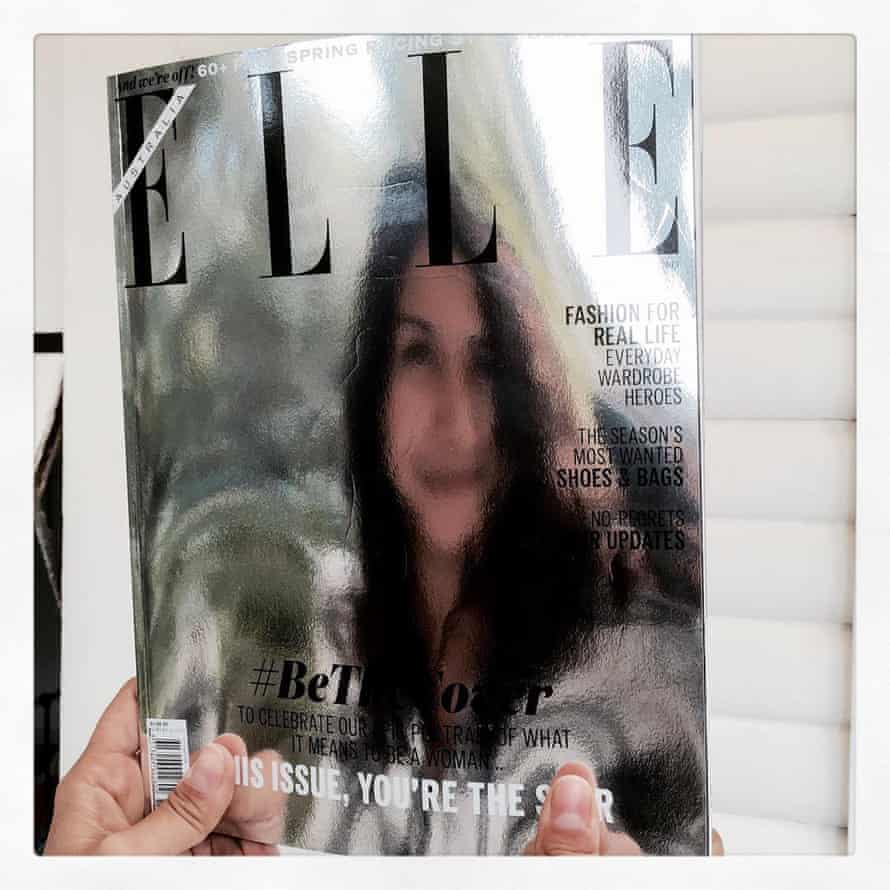I got up and knocked shyly on the door of my publisher’s office, delicately holding a printout of my latest cover in his fingertips. The cover I was holding in my sweaty hands this time was Beyoncé, and it looked like… well, it looked like Beyoncé. She looked perfect.
The editor held the cover in his hands and looked at it approvingly. “That’s wonderful,” she said, nodding. I breathed a small sigh of relief and turned to leave the room. But, just as I got to the door, she looked up from her computer screen and added, nonchalantly, as if having an afterthought, “Are you going to lighten her skin a bit?”
I was shaken, not really sure if she was joking. I stammered something incomprehensible in response and ran through the halls in mad panic to join my art director, who had been there longer than me and confirmed that it was a thing. real. “Black cover stars don’t sell in Australia,” everyone who should know has consistently told me. And neither, I was told at other times, Asians, tall bodies, pregnant women, freckles or redheads.
After a series of touch-ups – and, yes, skin lightening – I took the cover back for a second round of approvals. The editor posted it on his wall and stepped back to take a look. “Lovely,” she said, nodding her head. But just as I was about to walk through the door, she called again, like it was the first time she thought about it, “Are you going to lighten her skin a bit?” I didn’t know if I should laugh or cry. Shortly after, I was asked to do the same on Eva Mendes’ skin, at which point my brain exploded.
This was in the early days of retouching, when magazine editors were drunk on the relatively new power they had in their hands. The cover stars were not only made sleeker, slimmer and whiter, but sometimes received Frankenstein-esque makeovers, with different shots of a model’s head and body mixed and matched, or sometimes a head being patched onto someone else’s body. Thank goodness the industry finally learned the error of its ways, but real atrocities happened before it did.
Not that the perception of having to fit the cookie cutter cover mold ever went away. I wasn’t allowed to feature Rebel Wilson on the cover for a long time at Elle because apparently she “wouldn’t sell”, which was the publisher’s code for “not a size 0”.
Assembling a blanket should be simple. You have a cover star in mind, you talk to their people, you book a crew and a studio or location, and you take pictures. But it’s not as simple as that. First you have to think of someone you’d like to chase, which is sometimes difficult in itself.
It should be someone interesting to your readers, “on brand” for your masthead, and with some time. They must be famous and loved enough to sell their socks off. As my time as editor progressed, these unicorns became harder and harder to find. I missed the days in the late 2000s when we could just put Mischa Barton on the cover and know everything would be fine. Nobody liked Mischa. I don’t know where it all went wrong, for her or for us.
Hovering over you like cheap perfume as you make these decisions is the very real fear of failure – and of being fired. An editor’s career can be made or broken on the covers they lead, so there’s not much room for error. It might be easier if we had more Aussie celebrities with the power to sell magazines, but there just aren’t enough Nicoles, Naomis, Cates and Margots to go around so we need the most often we turn to international stars for the plum spot.
Before diversity became a commodity that the magazine publishing industry could no longer ignore, magazine publishers were constantly criticized for not being on their covers. In our defense, it was not for lack of trying. It is believed that editors have the final say on covers, but often – especially when an editor is new to the role – they have to have their covers signed by an editor or some sort of corporate management team, who are generally as knowledgeable about women as they seem, and always go for the safe option.

From the rise of celebrity covers in the 90s until not so long ago, it was virtually impossible to argue for anything different when almost all the covers that sold well featured blondes. very famous, very pretty and very skinny.
Fortunately, social media has also led to a resurgence of creativity in magazine covers. When revenue from copy sales was no longer as important as advertising, suddenly likes mattered more. Advertisers liked likes, and if advertisers liked your likes, they were more likely to give you their money. Which, if you were someone who didn’t like to play so carefully, like me, wasn’t such a bad thing.
Even though magazines have lost their place at the top of the media pecking order, the covers are still prime real estate – coveted, targeted, analyzed, loved, published and reported. Almost everything except purchased.
Even though influencers have grown in power, many of them still see coverage as the ultimate prize. It turns out that even people with far more subscribers than any magazine can claim to be able to give their grandmothers something tangible to show off at bingo.
In my experience, however, none of the really exciting covers that got a lot of likes or attention were ever our biggest sellers. Not a mirrored cover, which made readers the star of the magazine, or the one we shot on an iPhone, which made headlines around the world for being a world first. Not the one we made of model Gemma Ward with five different head shots cut in three, like a children’s flip book, which won cover of the year and was endlessly copied in other markets.
People loved these covers and advertisers loved them, which meant they were seen as a success in a different way, but the huge amounts of publicity they received were never reflected in their sales. The best-selling covers were the safest ones, preferably from a blonde your grandmother recognized on free-to-air TV, or literally anyone who shared a bloodline with Kris Jenner.
This led to a monotonous cycle of confirmation bias that permanently prevented magazines from evolving as they needed to.
But, when you take risks, the criticism that you can’t do something good if you don’t do it enough is a criticism that magazine editors also criticize a lot.

Robbie Myers, once my American counterpart on Elle, was under fire every time she put someone who wasn’t white or didn’t look like a model on the cover. She was criticized if they wore too much or too little. If she had done a portrait, or a full-length portrait, or if the image was black and white. Never mind that it was the only American fashion magazine to feature Gabourey Sidibe, Melissa McCarthy and Mindy Kaling on a cover in the first place and the shots were universally stunning. Similarly, Australian magazines had for years displayed a rotating series of pretty starlets and models on their covers, never attempting to show a different perspective.
It was enough to make me stare at my fellow Gourmet Travelers and fantasize about a world where the biggest cover drama I’d encounter was whether to run the chocolate lava cake or the pork belly.
As for Rebel Wilson, I ended up putting her on the cover. It sold very well.